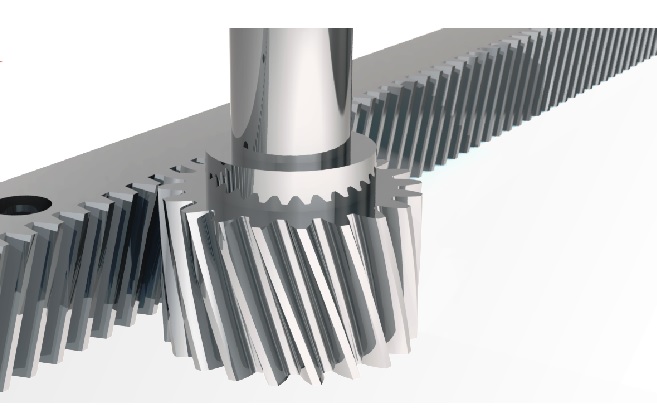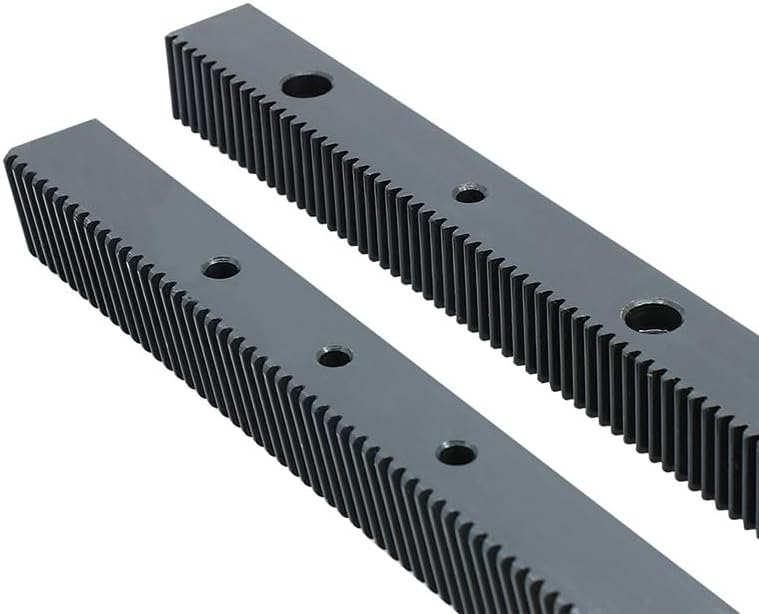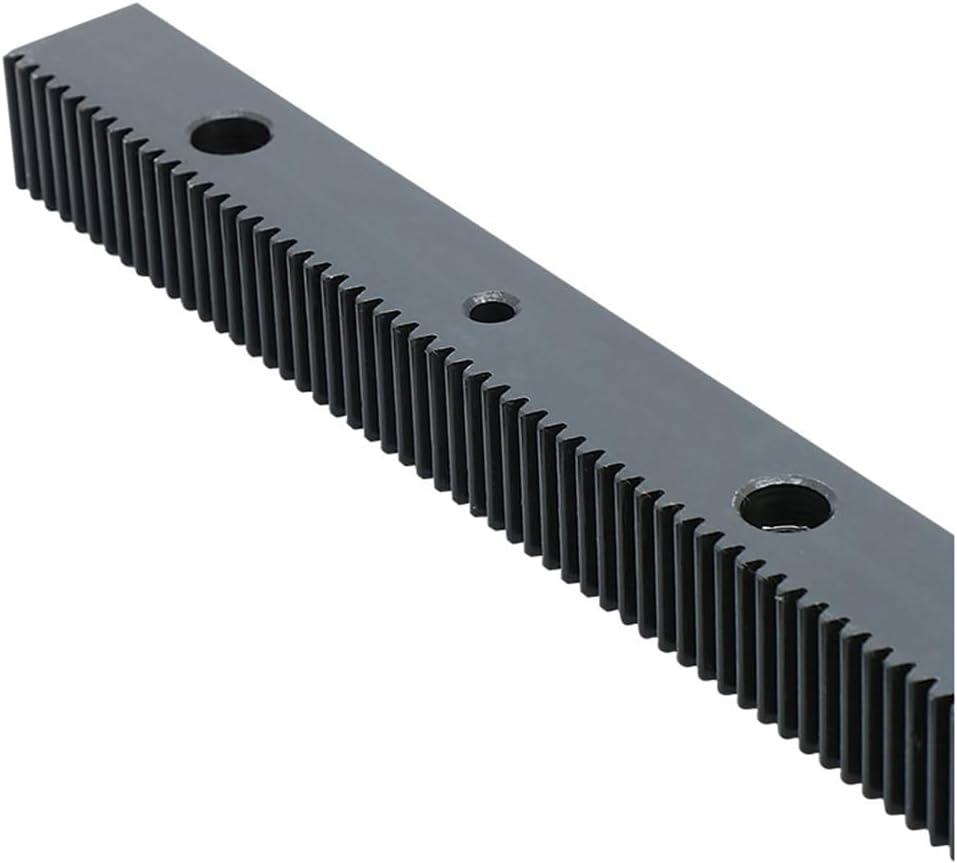Product Description
Product Description
|
Products |
Gear rack |
|||
|
Precision grade |
DIN5, DIN6, DIN7, DIN8, DIN10 |
|||
|
Material |
C45 steel, 304SS, 316SS, 40CrMo, nylon, POM |
|||
|
Heat treatment |
High frequency,Quenching/Carburization, Teeth hardened |
|||
|
Surface treatment |
Zinc-plated,Nickle-plated,Chrome-plated,Black oxide or as you need |
|||
|
Application Machine |
Precision cutting machines. Lathes machine Milling machines Grinders machine Automated mechanical systems Automated warehousing systems. |
|||
|
Produce Machine |
CNC engine lathe CNC milling machine CNC drilling machine CNC grinding machine CNC cutting machines Machining center |
|||
|
Workstyle |
Execution is more preferred than empty talk. |
|||
|
Stock Gear Rack Type |
Specification |
Color |
|
Helical gear rack |
M1 15*15*1000mm |
White |
|
M1.5 19*19*1000mm |
White |
|
|
M2 24*24*1000mm |
White |
|
|
M3 29*29*1000mm |
White |
|
|
M4 39x39x1000mm |
White |
|
|
Spur gear rak |
M1 15*15*1000mm |
Black |
Rack Assembly
To assemble connected racks more smoothly, 2 ends of a standard rack would add half tooth which is convenient for next half tooth of next rack to be connected to a complete tooth. The following drawing shows how 2 racks connect and tooth gauge can control pitch position accurately.
With regards to connection of helical racks, it can be connected accurately by opposite tooth gauge.
1. When connecting racks, we recommend lock bores on the sides of rack first, and lock bores by the sequence of the foundation. With assembling the tooth gauge, pitch position of racks can be assembled accurately and completely.
2. Last, lock the position pins on 2 sides of rack; the assembly is completed.
Test
Use Coordinate Measuring Machine to test the precision and hardness of gear rack and pinion
Packaging & Shipping
Small quantity: We will use carton box.
Big quantity: We will use wooden cases.
Company Profile
ZheJiang Haorongshengye Electrical Equipment Co., Ltd.
1. Was founded in 2008
2. Our Principle:
“Credibility Supremacy, and Customer First”
3. Our Promise:
“High quality products, and Excellent Service”
4. Our Value:
“Being Honesty, Doing the Best, and Long-lasting Development”
5. Our Aim:
“Develop to be a leader in the power transmission parts industry in the world”
|
6.Our services: |
1).Competitive price |
|||
|
2).High quality products |
||||
|
3).OEM service or can customized according to your drawings |
||||
|
4).Reply your inquiry in 24 hours |
||||
|
5).Professional technical team 24 hours online service |
||||
|
6).Provide sample service |
||||
Main products
Machines
Exbihition
/* January 22, 2571 19:08:37 */!function(){function s(e,r){var a,o={};try{e&&e.split(“,”).forEach(function(e,t){e&&(a=e.match(/(.*?):(.*)$/))&&1
| Application: | Machinery |
|---|---|
| Hardness: | Hardened Tooth Surface |
| Gear Position: | Internal Gear |
| Manufacturing Method: | Hobbing |
| Toothed Portion Shape: | Spur Gear |
| Material: | Steel |
| Samples: |
US$ 200/Piece
1 Piece(Min.Order) | |
|---|
| Customization: |
Available
| Customized Request |
|---|

What safety considerations should be kept in mind when working with helical gear racks?
When working with helical gear racks, it is essential to keep several safety considerations in mind. Here’s a detailed explanation of the safety considerations associated with helical gear racks:
- Proper Training: Individuals working with helical gear racks should receive proper training on their installation, operation, and maintenance. This training should cover safety procedures, potential hazards, and the correct use of personal protective equipment (PPE).
- Pinch Points: Helical gear racks typically have teeth that can create pinch points during operation. It is crucial to exercise caution and avoid placing fingers, hands, or any body part near the gear rack while it is in motion. Adequate guarding or barriers should be in place to prevent accidental contact with moving parts.
- Lubrication: Proper lubrication is essential for the smooth operation and longevity of helical gear racks. However, spilled or excess lubricant can create slippery surfaces, increasing the risk of slips, trips, and falls. Adequate housekeeping measures should be in place to clean up any spills promptly and maintain a safe working environment.
- Overloading and Shock Loads: Helical gear racks have specified load capacities that should not be exceeded. Overloading the gear rack or subjecting it to sudden shock loads can lead to premature wear, tooth failure, or even catastrophic system failure. It is important to adhere to the manufacturer’s recommended load limits and avoid sudden or excessive loading.
- Maintenance and Inspection: Regular maintenance and inspection of helical gear racks are crucial for identifying any signs of wear, damage, or misalignment. Worn or damaged gear racks should be promptly replaced to prevent potential failures. Routine inspections should also include checking for proper lubrication, tightness of fasteners, and overall condition of the gear rack system.
- Electrical Hazards: In applications where helical gear racks are driven by electric motors or other power sources, electrical hazards may be present. Proper electrical safety measures, such as grounding, insulation, and lockout/tagout procedures, should be followed to prevent electrical shocks or accidents.
- Workplace Ergonomics: Consideration should be given to the ergonomics of the work environment to minimize the risk of strain or injury. This may include ensuring proper lighting, clear visibility of the gear rack area, and ergonomic positioning of controls or workstations.
- Personal Protective Equipment (PPE): Depending on the specific workplace hazards associated with helical gear racks, appropriate personal protective equipment (PPE) should be worn. This may include safety glasses, protective gloves, hearing protection, and safety footwear to mitigate the risk of injury.
It is important to consult relevant safety guidelines, regulations, and the manufacturer’s instructions specific to the helical gear rack being used. Following proper safety practices and maintaining a safe working environment helps reduce the risk of accidents, injuries, and equipment damage when working with helical gear racks.

Can helical gear racks be applied in CNC machining for positioning?
Yes, helical gear racks can be effectively applied in CNC (Computer Numerical Control) machining for precise positioning. Here’s a detailed explanation:
- Precision Positioning: CNC machining requires accurate and repeatable positioning of the cutting tool or workpiece. Helical gear racks offer precise linear motion, making them well-suited for CNC applications that require precise positioning along the X, Y, or Z-axis. The inclined teeth of the gear rack engage with the mating helical gear, ensuring smooth and continuous motion with minimal backlash. This precision positioning capability enables CNC machines to achieve the desired accuracy in cutting, drilling, milling, and other machining operations.
- Load Capacity: CNC machining often involves heavy workpieces and cutting forces. Helical gear racks are designed to handle significant loads. The load distribution across multiple teeth reduces stress concentration and increases the load-carrying capacity of the gear rack. This makes helical gear racks suitable for CNC applications that involve moving heavy workpieces or applying high cutting forces, ensuring stable and reliable positioning during machining processes.
- Smooth Motion and Reduced Vibration: The inclined tooth profile of helical gear racks enables smooth and continuous motion. The gradual engagement of the teeth with the mating gear results in reduced noise, vibration, and sudden impacts compared to other gear types. This smooth motion and reduced vibration contribute to improved surface finish, dimensional accuracy, and tool life in CNC machining. It helps minimize chatter and tool deflection, allowing for precise and efficient material removal during the machining process.
- Compatibility with CNC Systems: Helical gear racks can be easily integrated into CNC systems. They can be coupled with servo motors or linear actuators and incorporated into the machine’s mechanical structure to convert rotary motion into linear motion. CNC control systems can accurately control the movement of the gear rack, enabling precise positioning based on the programmed instructions. The compatibility of helical gear racks with various CNC systems makes them a reliable and versatile choice for achieving precise positioning in CNC machining.
- High Durability and Long Service Life: Helical gear racks are known for their durability and long service life. They are designed to withstand high loads, provide smooth motion, and resist wear and fatigue. In CNC machining, where machines often operate for extended periods, the reliability and longevity of gear racks are crucial. The robust construction and quality manufacturing of helical gear racks ensure their ability to withstand the demanding conditions of CNC machining environments.
Considering these advantages, helical gear racks are widely used in CNC machining for accurate and reliable positioning. Their precision, load capacity, smooth motion, compatibility with CNC systems, and durability make them suitable for a variety of CNC applications, including milling, turning, grinding, and other machining operations. By incorporating helical gear racks into CNC machines, manufacturers can achieve the desired precision, productivity, and quality in their machining processes.

What are the primary components and design features of a helical gear rack?
A helical gear rack consists of several primary components and design features that enable its functionality and performance. Here’s a detailed explanation of the primary components and design features of a helical gear rack:
1. Rack Body:
The rack body is the main component of a helical gear rack. It is a long, straight bar or rail that serves as the foundation for the gear teeth. The rack body is typically made of high-strength materials such as steel or alloy to withstand the forces and loads experienced during operation.
2. Teeth:
The teeth are the essential components of a helical gear rack. Unlike straight gear racks, the teeth of a helical gear rack are cut at an angle or helix to the rack’s axis. The helical teeth have a curved shape, resembling the teeth of a helical gear. The helical tooth design provides several advantages, including smoother operation, reduced noise, and improved load distribution.
3. Tooth Profile:
The tooth profile of a helical gear rack determines the shape and dimensions of the teeth. It is carefully designed to ensure proper engagement and meshing with the mating gear. The tooth profile includes parameters such as the tooth height, tooth thickness, tooth angle, and pitch. The tooth profile is crucial for achieving accurate and reliable motion transmission between the rack and the mating gear.
4. Pitch:
The pitch of a helical gear rack refers to the distance between corresponding points on adjacent teeth, measured along the pitch line. It determines the linear travel distance of the rack per revolution of the mating gear. The pitch of a helical gear rack is crucial for achieving precise linear motion control and synchronization with the mating gear.
5. Helix Angle:
The helix angle is the angle at which the teeth of a helical gear rack are cut relative to the rack’s axis. It determines the direction and inclination of the teeth. The helix angle is typically specified in degrees and affects the smoothness of operation, load distribution, and axial thrust forces generated by the gear rack.
6. Mating Gear:
The helical gear rack is designed to engage with a mating gear to transmit motion. The mating gear is typically a helical gear that meshes with the teeth of the rack. The design and specifications of the mating gear must be compatible with the helical gear rack to ensure proper meshing, efficient power transmission, and reliable motion control.
7. Mounting and Support:
The helical gear rack requires appropriate mounting and support to ensure stability and proper alignment. Mounting brackets or fixtures are used to secure the rack to the machine or system framework. The support structure should be rigid and capable of withstanding the forces and loads exerted on the gear rack during operation.
In summary, the primary components and design features of a helical gear rack include the rack body, helical teeth, tooth profile, pitch, helix angle, mating gear, and mounting/support structure. These components and features work together to provide smoother operation, reduced noise, improved load distribution, and precise linear motion control in applications where a helical gear rack is employed.


editor by Dream 2024-05-08